This post has not been edited by the GamesBeat staff. Opinions by GamesBeat community writers do not necessarily reflect those of the staff.
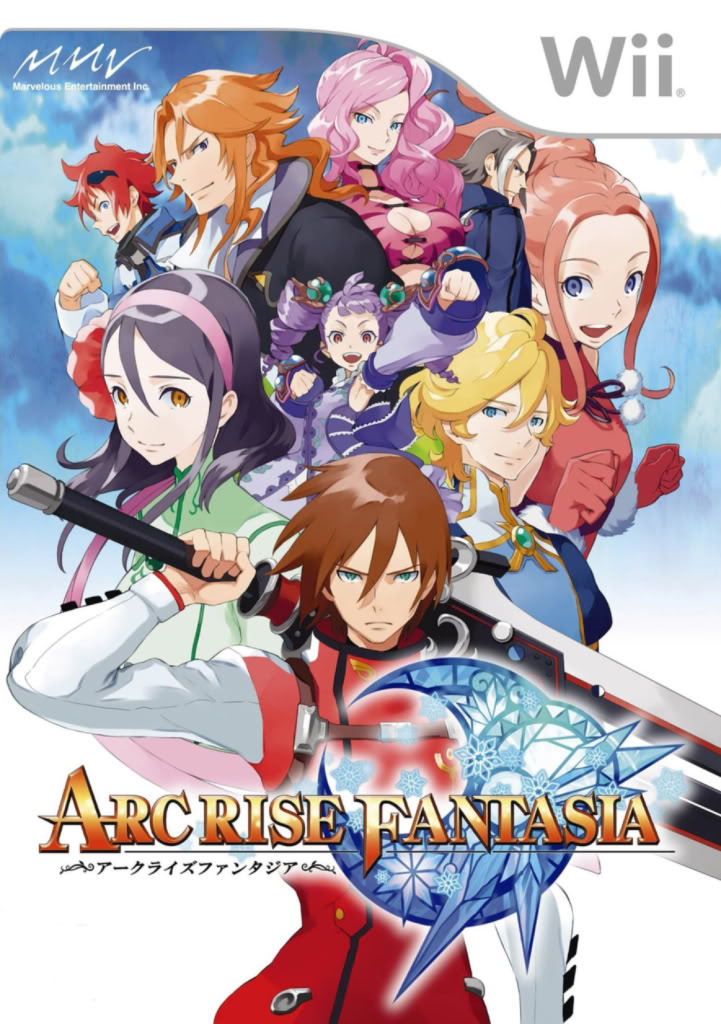 Arc Rise Fantasia opens on a fleet of airships effortlessly cutting through skies, high above the moonlit earth below. Knights clad in heavy, full armor patrol the decks, watching for signs of danger.
Arc Rise Fantasia opens on a fleet of airships effortlessly cutting through skies, high above the moonlit earth below. Knights clad in heavy, full armor patrol the decks, watching for signs of danger.
Suddenly, a horde of dragons burst through the distant, dark clouds on the horizon. The vigilant knights draw their massive blades, jostling as they anxiously await the impending attack.
A lone teenager confidently strides from the cabin of one ship. He effortlessly wields a sword almost as big as his own frame. Unlike the knights, he wears no armor; all he wears is a modern get-up that looks suspiciously like a skiing outfit, adorned with superfluous accessories (mostly belts).
One of the dragons swoops down for an attack. The teenager confronts the beast alone, completely sure of his own abilities. After a brief fight that ends in inevitable (scripted) victory, the young man is caught off-guard by one of the many other dragons flying about, and sent plummeting from the sky boat.
The young man lands, effortlessly, on the forest floor below, but not before the dragon he brought down with him begins to explode. Fortunately, just in time, another teenager — a young girl — emerges from the woods. She’s extremely fair-skinned, wide-eyed, purple-haired, dressed in white, and carrying an undefinable air of mystery, purity, innocence and power. She sings a magic song that turns the dragon into glowing blue light, safely dispersing it into the atmosphere (I don’t even want to know what effect that has on the ozone).
The young man is L’Arc Bright Lagoon, a young mercenary working with the Meridian Empire; the young woman is simply called Ryfia, a ‘Diva’ of ‘Noireism.’ Ryfia doesn’t seem to know a whole lot about where she is or what she’s doing, so L’arc offers to escort her through the dangerous, monster-ridden forest, to the nearby village of ‘Topazion.’ The two set off down a path lined with trees and tree-sized crystals.
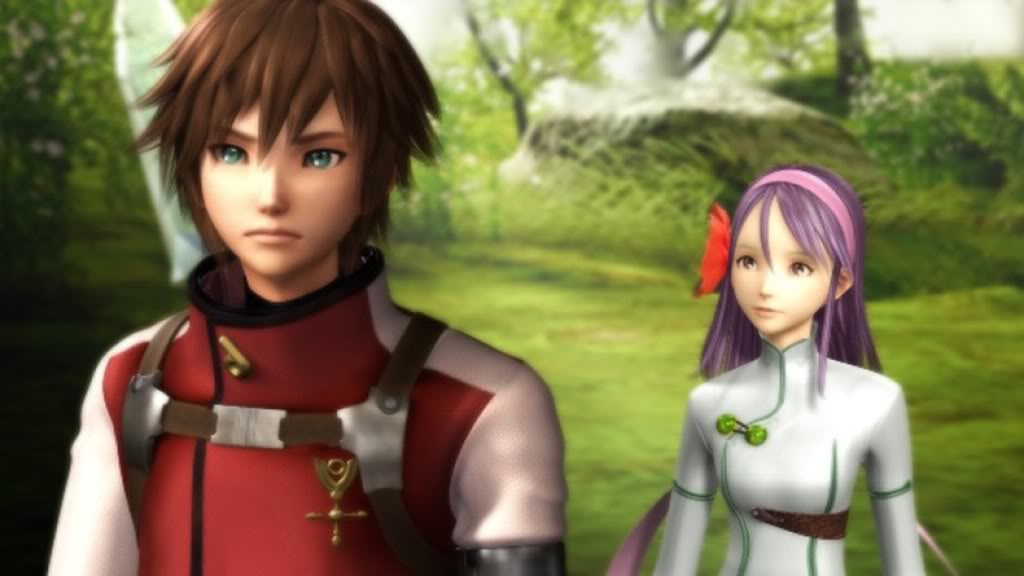
An incomprehensible title, airships, super-powered teenagers with giant swords, a lost young girl whose mysterious power is matched only by her naivete, random misappropriation of the French language, crystals sticking out of the ground . . . Yep, I’m playing a Japanese RPG, alright.
I admittedly fell out of love with the JRPG a long time ago. It wasn’t an easy breakup, though, as the JRPG and I shared a long relationship, bonded with the storied history of classics and quirks alike, such as Final Fantasy, Wild ARMs, Suikoden, and so many others.
Because of this history, I didn’t have a problem acclimating myself to Arc Rise Fantasia’s rigid, ruthless “JRPG-ness,” riddled with time-tested tropes and concepts. Despite the game’s not-so-good tutorials, I adapted easily to the many points, stats and resources that need to be managed both in and out of battle.
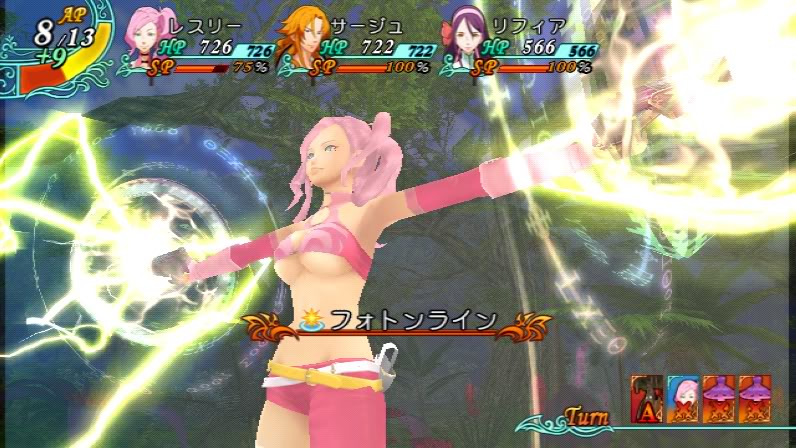
HP (health points), MP (magic points) and status effects are all a part of general gaming literacy, but only genre-devotees will readily latch onto concepts such as action points, weapon points, ‘Rogress’ points, and spell points, just to name a few. For any JRPG newcomers: good luck unravelling the Gordian Knot that is the game’s encyclopedia system, to learn all these concepts.
Combat itself can be approached two different ways: manually or automatically. In this case, I felt that the game served me a catch-22. Combat against regular enemies is nothing but a grinding routine. Most monsters can be easily dispatched with basic attacks and exist only to increase your experience so you can survive the next big boss fight. In other words: just hitting “attack” repeatedly is boring, so why bother?
Fortunately, the game provides an auto-battle system. The auto-battle allows you set up various tactics for your party members, such as “adaptive,” “heal only,” “don’t use magic,” etc. Unfortunately, the game’s AI is so inefficient that it usually wastes all those valuable action/spell/whatever points on ineffectual enemies. I suppose, in theory, this encourages you to learn to play the game manually. But breaking part of the game seems like a strange way to incentivize playing it.
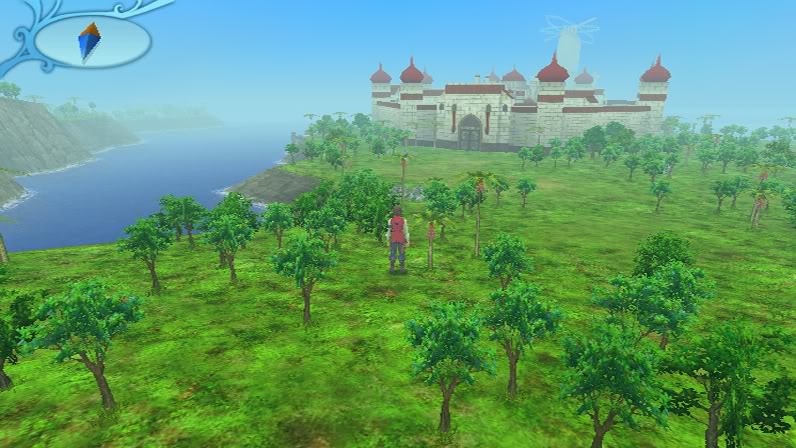
Outside of combat, there are no surprises. You’ll guide your party across an overworld made up mostly of forests, plains, deserts and snow, fighting creatures, skeletons, spirits, demons and deities on your way to the next town or dungeon. Along the way you’ll meet a colorful cast of kings, priests, thieves, mercenaries — some good, some bad, some apathetic. Good teenagers will fight bad teenagers and the fate of the world will hang in the balance.
Arc Rise Fantasia is a JRPG in the utmost traditional sense of the term. 12-year old me would have loved it, but those days are gone now. The game isn’t bad, by any means (well, except for the horrendous voice acting); it works as intended and succeeds at what it sets out to do. Arc Rise Fantasia is perfectly adequate. But who cares?
What it sets out to do is make a completely by-the-numbers JRPG. For former genre enthusiasts like myself, all the classic examples of the JRPG are readily available thanks to services like Sony’s Playstation Network and Nintendo’s Virtual Console. For newcomers, well, all the classic examples of the JRPG are readily available thanks to services like PSN and the Virtual Console.
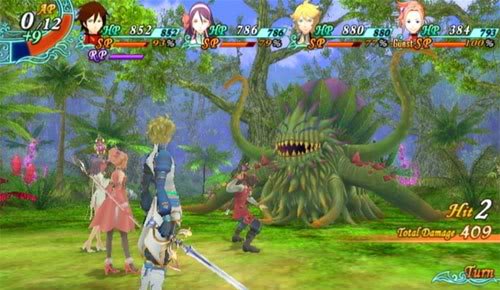
The plot offers up an interesting twist or two, but its major beats can be predicted within minutes of starting the game. Combat is nothing but a grind; the characters all fall into ancient genre stereotypes, providing no reason to care or take any interest in them; the world is a predictable, but nonsensical, mash-up of random cultures, histories and concepts.
I hate to end a review with the oft-used, “I suppose I can recommend it for fans of this kind of game . . .” line but, in this case, I don’t see any way out of it. If you’ve played all the currently existing, generic, traditional JRPGs to death and you’re looking for another one, then, yes, Arc Rise Fantasia exists.
(Originally posted at Gaming Evolution)
